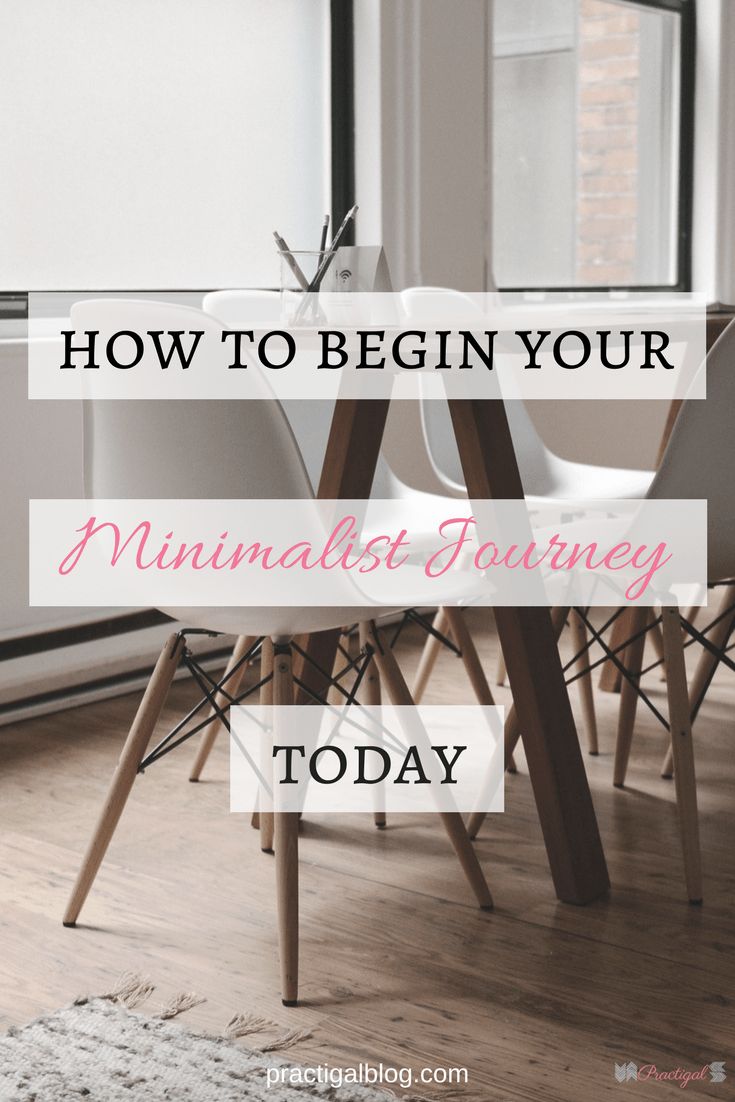Your 30-Day Journey To A Minimalist Home

Table of Contents
Week 1: Assessing and Planning Your Minimalist Home Transformation
Before diving into the decluttering process, it's crucial to establish a solid foundation. This week focuses on setting intentions and preparing for the journey ahead.
The Importance of a Minimalist Mindset
Embracing minimalism isn't just about getting rid of stuff; it's about a shift in perspective.
- Define your minimalist home: What does a minimalist home mean to you? Is it spacious and airy? Organized and functional? Aesthetically pleasing and calming? Clearly defining your vision is the first step.
- Identify your motivations: Why do you want a minimalist home? Is it to reduce stress, gain more time, or create a more peaceful environment? Understanding your "why" will keep you motivated throughout the challenge.
- Visualize your ideal minimalist home environment: Create a vision board, find inspirational images online, or simply spend time mentally picturing your ideal space. This visualization will guide your decisions during the decluttering process.
- Set realistic goals: Don't try to do everything at once. Set achievable goals for each week of the 30-day challenge. Focus on one or two areas at a time to avoid feeling overwhelmed.
The Initial Declutter Audit
Begin by taking stock of your belongings. This inventory will help you prioritize your efforts.
- Create a decluttering inventory list: List each room and area of your home (closets, drawers, shelves, etc.). This creates a structured approach to your minimalist home organization.
- Identify problem areas: Pinpoint the areas with the most clutter – overflowing closets, junk drawers, etc. These will be your focus in the coming weeks.
- Take before photos: Document the current state of your home. These "before" photos will be incredibly rewarding to compare with your "after" photos – perfect for sharing your minimalist home decor journey on social media!
- Gather necessary supplies: Prepare boxes or bags for items you'll donate, sell, or discard. Having these ready will streamline the decluttering process.
Week 2: Conquering Clutter Room by Room
Now it's time to tackle the clutter! We'll focus on high-clutter areas and introduce effective decluttering strategies.
Tackling Clothing and Accessories
Clothing often accumulates quickly. These strategies will help you pare down your wardrobe effectively.
- The 20/20 rule: If an item costs less than $20 to replace and takes less than 20 minutes to acquire, replace it instead of spending time decluttering it. This helps prioritize your time on more valuable items.
- The "one in, one out" rule: For every new item of clothing you buy, get rid of an old one. This prevents future accumulation.
- Donate, sell, or recycle: Find a good home for unwanted clothes. Consider donating to charities, selling on online marketplaces, or recycling textiles.
- Organize remaining clothes: Use effective folding techniques, drawer dividers, and other organizational tools to maximize space and maintain a tidy wardrobe.
Decluttering Your Kitchen and Bathroom
These spaces often accumulate unnecessary items. Focus on functionality and efficiency.
- Expired food and unused appliances: Discard expired food and donate or sell seldom-used kitchen appliances to streamline your kitchen organization.
- Duplicate items: Identify and remove duplicate spices, toiletries, and other items. This will free up valuable space.
- Organizing pantry and cabinets: Use clear containers to store food items, making it easier to see what you have and preventing waste. Consider implementing a minimalist home decor approach with uniform containers.
- Efficient bathroom storage solutions: Utilize vertical space and install shelves or drawers to maximize storage and minimize clutter in your bathroom.
Week 3: Digital Minimalism and Home Organization
Minimalism extends beyond physical items; it also encompasses our digital lives.
Digital Decluttering
Reduce digital clutter for a more streamlined and peaceful digital experience.
- Unsubscribe from unwanted emails and notifications: Reduce the influx of unnecessary emails and notifications to create a more focused digital environment.
- Delete unused apps and files: Remove apps and files that you no longer use to free up storage space on your devices.
- Organize your digital photos: Back up and organize your photos to create a manageable and easily accessible digital photo library.
- Create a streamlined digital filing system: Develop a clear and organized system for storing your digital documents and files.
Optimizing Home Storage and Organization
Effective storage is key to maintaining a minimalist home.
- Utilizing vertical space: Maximize storage by utilizing vertical space with shelves, tall cabinets, and wall-mounted organizers.
- Implementing smart storage solutions: Invest in smart storage solutions like drawer organizers, under-bed storage, and stackable containers.
- Labeling and organizing storage containers: Clearly label storage containers to easily identify their contents and maintain a tidy and organized space.
- Regular maintenance: Schedule regular decluttering sessions to prevent future clutter build-up and maintain your minimalist home organization.
Week 4: Maintaining Your Minimalist Home and Embracing the Lifestyle
The final week focuses on establishing lasting habits and enjoying the benefits of a minimalist lifestyle.
Developing Minimalist Habits
Cultivate consistent habits to sustain your minimalist home.
- Practicing mindful purchasing: Before making a purchase, consider whether you truly need the item and if it aligns with your minimalist lifestyle.
- Regular decluttering sessions: Schedule regular decluttering sessions to prevent clutter from accumulating again. A weekly 15-minute declutter session can make a huge difference.
- Creating a donation/recycling routine: Establish a routine for donating or recycling unwanted items.
- Avoiding impulse buys: Practice mindful spending and avoid impulse purchases to maintain your minimalist home decor and reduce unnecessary consumption.
Enjoying the Benefits of a Minimalist Home
Experience the positive impacts of a clutter-free environment.
- Reduced stress and anxiety: A minimalist home contributes to a calmer and more peaceful atmosphere.
- More time and energy: Less clutter equates to less time spent cleaning and organizing.
- Improved focus and productivity: A clutter-free environment fosters better concentration and productivity.
- A sense of calm and peace: Embrace the tranquility and serenity of a minimalist home.
Conclusion:
This 30-day journey to a minimalist home is more than just decluttering; it's about cultivating a simpler, more intentional way of living. By following these steps and developing consistent minimalist habits, you can create a home that is not only organized and aesthetically pleasing but also reflects your values and enhances your overall well-being. Start your journey today and experience the transformative power of a minimalist home! Begin your 30-day minimalist home challenge now and discover the joy of simple living. Remember to share your progress using #minimalist home #30daychallenge!

Featured Posts
-
 Judge Extends Reprieve On Harvard Foreign Student Ban
May 31, 2025
Judge Extends Reprieve On Harvard Foreign Student Ban
May 31, 2025 -
 Munguia Vs Surace Ii Munguia Secures Points Decision In Riyadh
May 31, 2025
Munguia Vs Surace Ii Munguia Secures Points Decision In Riyadh
May 31, 2025 -
 Designing The Good Life Intentional Living For Greater Fulfillment
May 31, 2025
Designing The Good Life Intentional Living For Greater Fulfillment
May 31, 2025 -
 Understanding The Good Life A Holistic Approach To Wellbeing
May 31, 2025
Understanding The Good Life A Holistic Approach To Wellbeing
May 31, 2025 -
 Analysis Far Lefts Reaction To Killing Highlights Frances Islamophobia Issue
May 31, 2025
Analysis Far Lefts Reaction To Killing Highlights Frances Islamophobia Issue
May 31, 2025
